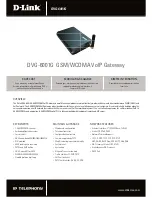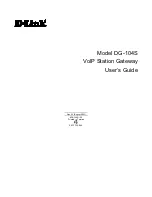
Traffic Policing and Shaping
▀ Traffic Policing Configuration
▄ Cisco ASR 5x00 Packet Data Network Gateway Administration Guide
512
There are numerous keyword options associated with the
qos traffic-police direction { downlink |
uplink }
command.
Repeat for each additional subscriber to be configured.
Important:
If the exceed/violate action is set to “lower-ip-precedence”, the TOS value for the outer
packet becomes “best effort” for packets that exceed/violate the traffic limits regardless of what the
ip
user-datagram-tos-copy
command in the Subscriber Configuration mode is configured to. In addition,
the “lower-ip-precedence” option may also override the configuration of the
ip qos-dscp
command (also
in the Subscriber Configuration mode). Therefore, it is recommended that command not be used when
specifying this option.
Step 2
Verify the subscriber profile configuration by applying the following example configuration:
context <
context_name
>
show subscriber configuration username
<user_name>
Step 3
Save your configuration to flash memory, an external memory device, and/or a network location using the Exec mode
command
save configuration
. For additional information on how to verify and save configuration files, refer to the
System Administration Guide
and the
Command Line Interface Reference
.
Configuring APN for Traffic Policing in 3GPP Networks
This section provides information and instructions for configuring APN template’s QoS profile in support of Traffic
Policing.
The profile information is sent to the SGSN(s) in response to GTP Create/Update PDP Context Request messages. If the
QoS profile requested by the SGSN is lower than the configured QoS profile configured, the profile requested by the
SGSN is used. If the QoS profile requested by the SGSN is higher, the configured rates are used.
Note that values for the committed-data-rate and peak-data-rate parameters are exchanged in the GTP messages between
the GGSN and the SGSN. Therefore, the values used may be lower than the configured values. When negotiating the
rate with the SGSN(s), the system convert this to a value that is permitted by GTP as shown in the table below.
Table 45.
Permitted Values for Committed and Peak Data Rates in GTP Messages
Value (bps)
Increment Granularity (bps)
From 1000 to 63,000
1,000 (e.g 1000, 2000, 3000, ... 63000)
From 64,000 to 568,000
8,000 (e.g. 64000, 72000, 80000, ... 568000)
From 576,000 to 8,640,000
64,000 (e.g. 576000, 640000, 704000, ... 86400000)
From 8,700,000 to 16,000,000 100,000 bps (e.g. 8700000, 8800000, 8900000, ... 16000000)
Step 1
Set parameters by applying the following example configurations:
Step a
To apply the specified limits and actions to the downlink (the Gn direction):
configure
















































